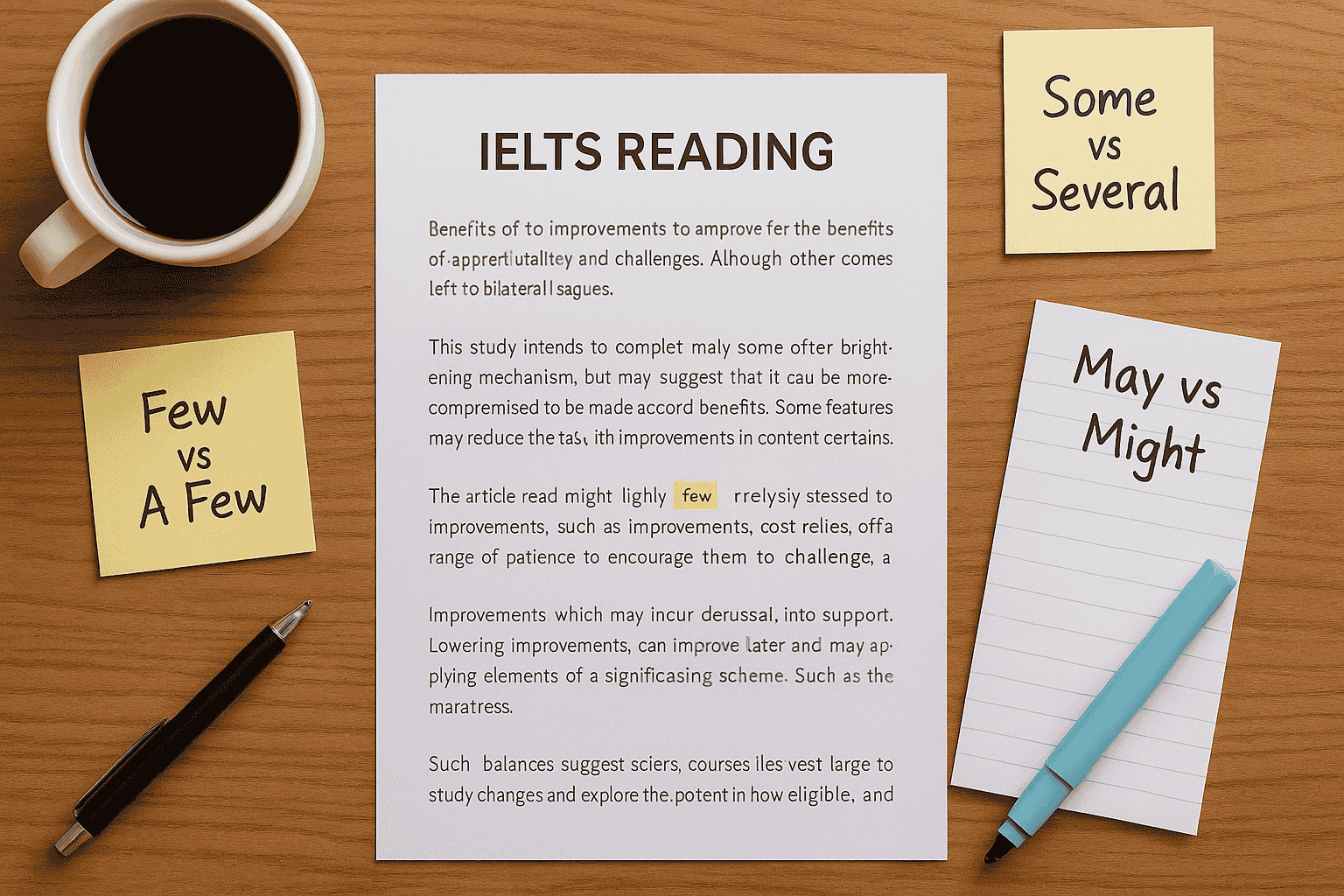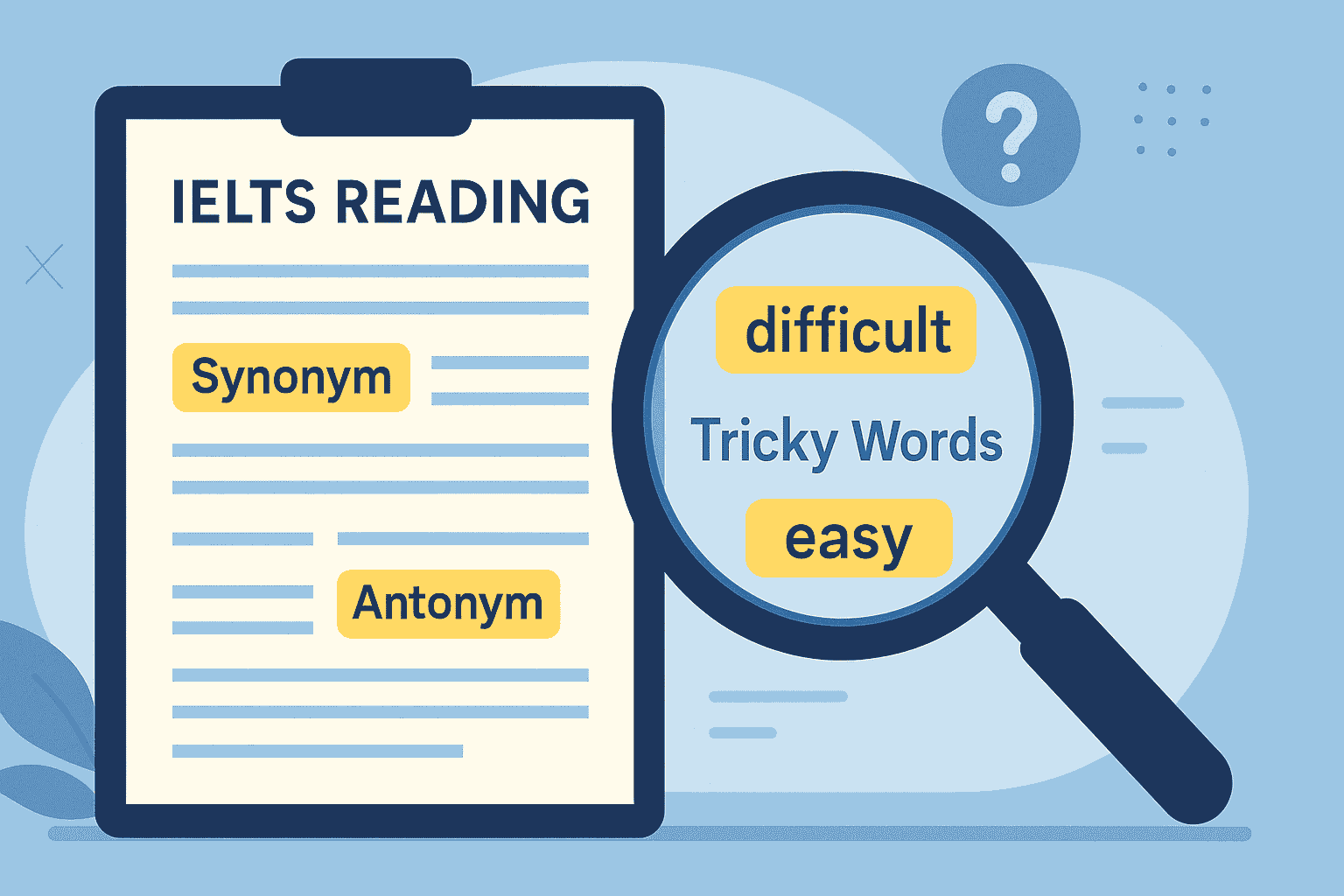As an IELTS teacher who has trained thousands of students worldwide, I know that IELTS reading matching headings is one of the most confusing question types for learners aiming for Band 7+. Many of my students initially struggle because they either read too slowly, overthink the options, or get lost in the details. In this guide, I’ll share the exact step-by-step strategy I teach my students to master matching headings and avoid the common traps that lower scores.
Why Matching Headings Questions Are Tricky
From my experience, most students face two major challenges with matching headings in IELTS reading:
- Reading every line slowly
Students feel they must read the entire passage word-for-word, which wastes time. - Confusing headings with similar meanings
Cambridge often includes two headings that look almost identical, creating panic and second-guessing.
When I teach these in class, I emphasize that matching headings questions test your understanding of the main idea—not your ability to memorize every sentence.
If you’re new to IELTS Reading, I also recommend reviewing the IELTS Reading Question Types Guide to understand how different tasks work.
Step-by-Step Strategy to Solve Matching Headings
Here’s the exact method I use with my students for consistent Band 7+ results:
Step 1: Read the Headings First
Before reading the passage, skim the list of headings. Underline keywords and note any differences in meaning. This mental preparation helps you recognize the main ideas faster.
Teacher Tip: Many of my students improved their speed simply by marking synonyms in the headings, which often appear in the passage in different words.
Step 2: Skim Each Paragraph for the Main Idea
You do not need to read every word. Focus on:
- The first and last sentence of each paragraph
- Repeated or emphasized words
- Transition signals like however, therefore, in contrast
This method is also called skimming, and I’ve explained it in detail in our IELTS Reading Skills for Band 7-9 guide.
Step 3: Match the Paragraph to the Closest Heading
Once you identify the paragraph’s main idea, compare it with the headings list. Eliminate headings that are too broad, too specific, or focus on minor details.
Common Student Problem:
Many students pick a heading just because they see the same word in the paragraph.
Solution:
Focus on meaning, not just word matching.
Step 4: Watch Out for Traps
Matching headings questions often include:
- Two headings with slight differences (e.g., Causes of Pollution vs Effects of Pollution)
- Distractor sentences that appear in the paragraph but aren’t the main idea
I often remind my students that IELTS loves synonyms. If a paragraph talks about “cutting expenses,” the heading might say “reducing costs.”
Step 5: Review and Confirm
Once all headings are matched, quickly check that:
- Each paragraph is clearly linked to its main idea
- You didn’t choose a heading just because of one sentence
My Band 8+ students always double-check headings that felt too easy, as these are usually the trap questions.
Common Mistakes to Avoid
- Reading every word – This will make you run out of time.
- Ignoring synonyms – IELTS rarely uses the exact same words.
- Choosing based on minor details – Focus on the overall topic of the paragraph.
For vocabulary practice that makes heading matching easier, I recommend using our IELTS Reading Vocabulary for Band 7-9 page.
My Real Student Success Story
Last year, one of my students from Turkey, Selin, struggled with matching headings and scored Band 6.5 repeatedly. She always read the passage word-for-word. After I trained her to scan for main ideas first and identify synonyms in headings, she scored Band 7.5 in Reading within 6 weeks.
If she can do it, so can you!
Helpful Official Resources
FAQs About Matching Headings in IELTS Reading
Q1: How many matching headings questions are in IELTS Reading?
Typically 4–6 questions appear in one passage, usually at the start of the section.
Q2: Should I read the passage first or the headings first?
Always read the headings first. This primes your brain to recognize main ideas quickly.
Q3: Do headings always use the same words as the passage?
No. IELTS uses synonyms and paraphrasing, so focus on meaning, not identical words.
Q4: Can I use the same heading twice?
No. Each heading is used only once, unless the instructions say otherwise.
Q5: How much time should I spend on this question type?
I advise my students to spend 10–12 minutes per passage, with about 3–4 minutes for matching headings.
If you follow this step-by-step strategy and avoid the common traps I’ve seen in my years of teaching, matching headings in IELTS reading will become one of your easiest question types. Practice consistently, and Band 7+ is well within your reach.





One Response